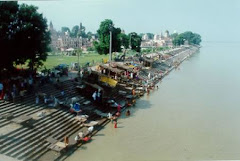Agra Tourism
Population : 956,000
Distance : 194 kmfrom Delhi
Distance : 194 kmfrom Delhi
 ¤ Historic Prespective
¤ Historic PrespectiveAgra is not synonymous with just the Taj Mahal. The earliest reference to the city is found in the Hindu epic, Mahabharata, which refers to it as Agrabana – the city of paradise.
However, the town remained insignificant until Sikandar Lodi of the Delhi Sultanate made it his seat of power in 1505.
It was here that Babur defeated the Rajput king Rana Sangha in the Battle of Khanua in 1527, to sow the seed of the Mughal Empire, which blossomed over the next 200 years. In the 16th and 17th centuries, the sumptuous courts of Akbar, Jahangir and Shah Jahan transformed Agra into a sophisticated, luxurious, man-made paradise.
When the fortunes of the Mughals dwindledin the 18th century, the pre-eminence of Agra too declined.
Today, the town is a bustling industrial and commercial hub, and the phrase ‘Go to Agra’ has a different connotation. The reference is to the psychiatric hospital in the area – the jocular implication being, that you need to check out your mental health.
¤ Agra At A Glance
A visit to the city is like being transported back in time. Situated on the banks of the Yamuna, its narrow crowded streets and boulevards are medieval in structure, while its bazaars are splashed with colour and gaiety – which is the hallmark of the city.
All sorts of stuff, especially leather goods, local handicrafts and imitation inlay work on marble (including miniaturised Taj Mahals) jostle for shelf space in the shops. Its pethas (pumpkin sweet), dalmoth (fried peas) and sumptuous Mughlai food are worth a try.
The streets of Casablanca or Cairo could not have been very different in the middle ages.
Although Muslims comprise just a tenth of the population of Agra today, the town retains its Islamic character, reminiscent of the time when it held centre-stage in Indian politics – during the halcyon days of the Mughal Empire.


























